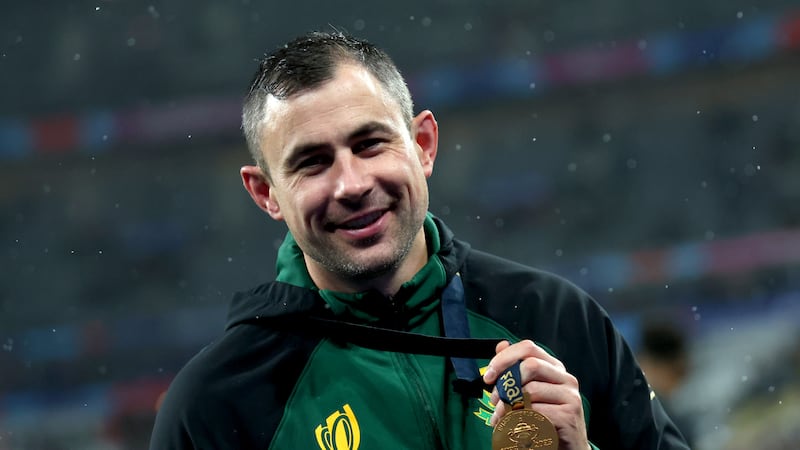Athletics Roger Bannister in Dublin: They'd gathered outside the Westbury Hotel from early morning, cameras at hand and ready for a glance at their idol. It's early afternoon when he eventually checks in, Roger Bannister, still unmistakable at age 75. Yet no one bats an eyelid. Only then are the posters spotted of Britney Spears.
In a quiet suite upstairs, Bannister comes striding in and with a salute more than a wave greets Eamonn Coghlan. His fellow mile specialist helps unveil a superb charcoal drawing of that classic image: Bannister breaking the tape at the Oxford running track, May 6th, 1954, and his 3:59.4.
Within moments Bannister is jokingly reminiscing on that day 50 years on, an event still being celebrated. How he has the shoes and the vest but lost the number. How someone handed him a jar of the old cinders when the track was later torn up.
He signs the drawing for the Irish Milers Club, and then the two reporters move in.
"So we have The Irish Times and the Irish Independent?" he starts. "So no tabloids then. Just the heavyweights. Good to know where we stand there."
For a good hour he talks almost entirely unprompted, his remarkable energy and warmth becoming infectious. Occasionally his wife, Moyra, interrupts with some details, but Bannister flows with all the grace and rhythm that helped ensure his place in sporting history: the first man to rule the mile in under four minutes.
"No, it wasn't something I'd always aspired to do. I was really doing it as preparation for the Empire Games later that summer. I'd failed in the Helsinki Olympics in 1952, where I'd planned to retire. I thought I had it all worked out. Gold medallist, 1,500 metres, now get on with the medicine."
Only after finishing fourth in the Olympics did he drift towards the goal. "I also realised that someone was about to break four minutes. And that it was either going to be Wes Santee, John Landy, or it was going to be me. And I'd decided on two things: that you had to get the pacing right, so that was when I formed the very close relation with Chris Brasher and Chris Chataway. And the second thing was timing and the venue, because I knew Landy was offered perfect conditions later that summer."
With that, he opens the book on his lap, The First Four Minutes, which he updated for the 50th anniversary. And he highlights the complete rest he took the five days before.
"Well, I walked about and so on. But it was to ensure I would feel very special when the day came, and be ready to tear up the track. That was probably why I felt Chris Brasher wasn't going fast enough on the first lap, which of course he was."
He's asked where the mile can go from here. The current world record of 3:43.13 was set by Hicham El Guerrouj in 1999.
"Of course there is a limit. But I know I said 50 years ago that it would be very difficult to get to around three and a half minutes. And I don't think I need revise that. If you allow four seconds for the slower, cinder tracks that we were on, then it's taken 50 years for 13 seconds improvement. Or say a third-of-a-second a year."
But away from running again, he wants to talk about Ireland. Later in the evening he is to speak to a few hundred people at Citywest, and tomorrow attend the Irish Schools athletics championships in Tullamore.
"I've always loved it here, and my wife is a quarter Irish. So I feel that every second year at least I ought to visit. I just find the attitude and wit and intelligence of the Irish people attractive. And of course the Abbey Theatre.
"And I still remember the time I ran here in Santry, under Billy Morton. He had the capacity to persuade runners from across Europe to come to Dublin. I remember he said that he was having a small Olympic event, and as it turned out the Olympic element to his event was releasing a few pigeons at the start of it. But I thought that was beautiful."















